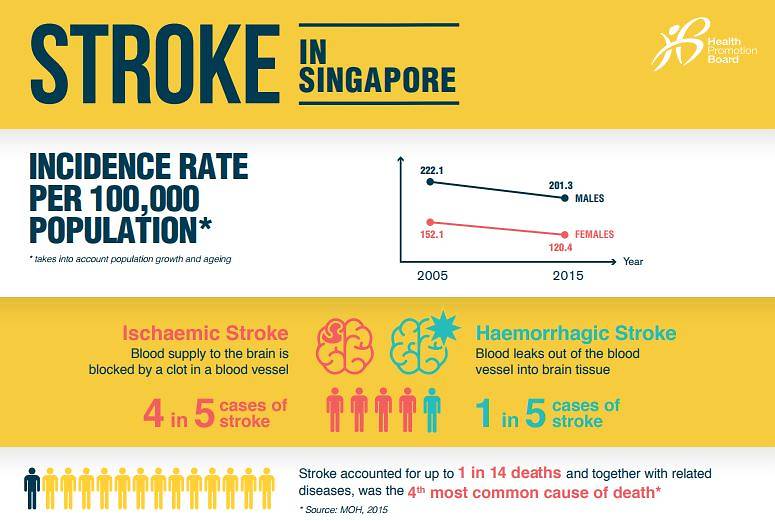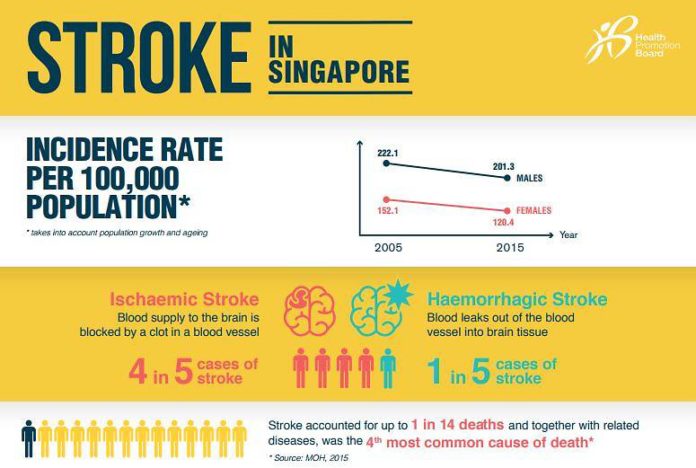SINGAPORE: The problem is simple enough: Current methods of managing and predicting strokes are insufficient.
According to See-Mode Technologies’ co-founder Milad Mohammadzadeh, about 25 per cent of strokes globally are recurring ones with a year of the patient’s first stroke. In Singapore, there are 7,000 new stroke patients here each year, he added during an interview with Channel NewsAsia on Wednesday (Jan 17).
The first statistic is indicative of how current ways of predicting and managing strokes are not effective enough. Dr Milad, who has a PhD in Applied Physics from Nanyang Technological University, explained that currently, neurologists and clinicians rely on anatomical data from patients’ CT or MRI scans to make their assessments and come up with treatment plans for stroke victims.
However, studies in the past three years have shown that anatomical data is just one factor to predict the risk of strokes happening, and it is not the key one, he said. Rather, he said physiological data such as blood flow has been found to be correlated with strokes, and should be factored in the overall assessment.
However, blood flow data is not available to neurologists as it is to cardiologists, who use the data to assess the risk of cardiovascular diseases such as heart attacks, Dr Milad shared.
This, he explained, is because an invasive surgery would have to be done to collect patients’ blood flow data, and this is “too dangerous” to obtain for stroke patients, particularly those who suffer from intra-cranial ones, as this would mean operating on the brain.
As such, his expertise in biomedical fluid dynamics comes into play; he was able to develop the software to simulate patients’ blood flow. With both anatomical and physiological information, doctors would then be better able to assess and treat stroke patients, Dr Milad said.
He and his wife Sadaf, who holds a PhD in Electrical and Computer Engineering from the National University of Singapore, said they are “very honoured” if their idea is able to solve this current pain point for neurologists everywhere.
As it is, See-Mode has agreed to partner with two Singapore hospitals – “these are the biggest hospitals that deal with stroke patients … more than 1,000 a year” – and is waiting to complete the administrative formalities. Dr Milad said he expects to start clinical trials there “in the next few months”.
According to the 2015 figures from the Ministry of Health, the disease accounted for one in 14 deaths here. Together with related diseases, it was the fourth most common cause of death.

(Infographic: National Registry of Diseases Office)
ACCIDENTAL ENTREPRENEURS
However, the See-Mode co-founder didn’t think much about starting his own business initially.
The 27-year-old shared that it was his wife who was the one that pushed them towards signing up for Entrepreneur First Singapore’s start-up bootcamp, which was then recruiting its second batch of interested applicants.
“I was worried about stability,” he shared, adding that his preferred route was to do a post-doctorate or enter the industry, knowing that his creations would be used.
“I essentially tagged along, but I’ve not looked back (since),” Dr Milad said.
Dr Sadaf, on the other hand, knew that settling down in academia wasn’t for her. “I wanted to make a difference,” she shared, having been inspired by her parents who are both in the medical field.
But signing up for EF’s six-month programme was the easy part.
When the programme started, the couple initially went their separate ways looking for partners to team up, given that their specialities were in different fields. It was only a chance conversation Dr Sadaf had with a “renowned neurologist from Singapore” that pointed the way for the husband and wife to work together.
The doctor had given “broad brush strokes” of the challenge facing neurologists and clinicians today, and she realised that half of the problem was related to her field in artificial intelligence and machine learning, while the other half related to her husband’s expertise in biomedical fluid dynamics.
To ascertain that this was indeed a problem faced by many, and not just one doctor, the couple then spoke to about 50 neurologists, radiologists and clinicians from countries such as the US, Sweden and other parts of Europe. Through these conversations, they narrowed down the problem to the one they are trying to solve: Assessing stroke risk beyond relying on traditional anatomical data.
“The risk of having a stroke is not just about the shrinking of one’s blood vessels,” Dr Milad reiterated.
He added that the start-up has seen “significant interest” by three VCs that attended EF’s Investor Day on Tuesday, which saw the company pitch its idea to the investor community.
See-Mode Technology founders pitching their idea during EF’s Investor Day. (Photo: Alex Crompton/Twitter)
“MAKING FIRST STEP SAFE” FOR WOULD-BE ENTREPRENEURS
Through the experience, Dr Sadaf shared that the EF method of recruiting people with deep technical skills, but who do not have an idea or a team, played a big part in enabling the couple to make their foray as entrepreneurs.
By giving a monthly stipend to the accepted applicants, this removes the immediate worry of financial security for researchers or those in academia who might have an idea, but were afraid of pursuing them. It “makes the first step very safe”, she said.
The programme comprises of two three-month phases: For the first three months, each participant receives S$5,000 a month and focuses on finding a co-founder and developing a commercially viable idea. If a start-up is successfully formed during this phase, EF will invest a further S$25,000 for an 8 per cent equity stake in the entity.
During the second phase, teams will focus on product development and customer traction, and they will receive mentoring and advice from the EF team and top entrepreneurs. The UK-based investor will also provide work spaces, legal and administrative support.
One of Europe’s leading talent investor, which has produced 100 start-ups that are now worth more than US$1 billion, it opened its first international office here in 2016 by partnering with SGInnovate, then known as Infocomm Investments.
Ms Anne Marie Droste, co-director of EF Singapore, shared during a media briefing on Wednesday that the difference it takes, compared to more traditional venture capitalists in the market, is it focuses on investing on the person, and even before they have decided to become an entrepreneur.
She added that many of those in academia or research institutes tend to face problems such as having “no confidence in their ideas” or unable to find co-founders to work on the same project, so they abandon the intention of starting their own businesses.
Her co-director, Mr Alex Crompton, pointed out that its start-ups incubated from out of Singapore has certain perks, particularly if they are in “regulated industries” such as healthcare.
He said the local government is “anticipatory” of businesses’ needs, which means companies can move very fast – and this is a “massive competitive advantage” over other markets, he said.
As an update, EF Singapore said its first batch of 12 graduating start-ups that made their debuts last March have all been offered term sheets and funding from venture capital firms such as Cocoon Capital, Wavemaker and SGInnovate.
It will continue to guide the second cohort of 14 – which See-Mode Technologies is part of – through fundraising and hiring over the next six months, while its third cohort is about to start later this month. Registrations for the fourth batch was also opened at the turn of the year, the company said.





